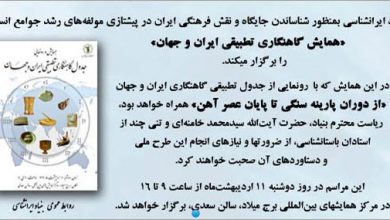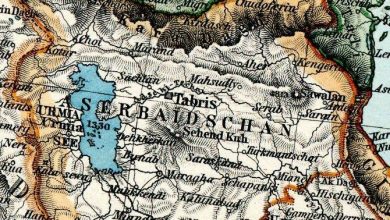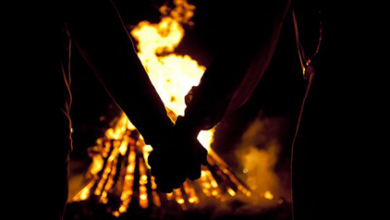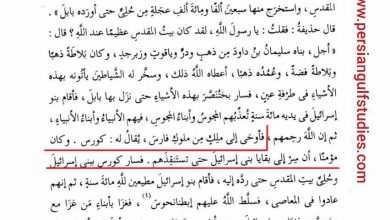Biography of Professor Shajarian – Iran's great singer
Mohammad Reza Shajarian (Mehr 1, 1319 in Mashhad) He is an Iranian singer, musician and calligrapher. The Asia Society website has described him as the most famous authentic Iranian music artist and the Vancouversan newspaper has described him as one of the most important music artists in the world. Mohammadreza Shajarian is currently the head of the Supreme Council of the Iranian House of Music.. He is also the founder of Shahnaz Group.
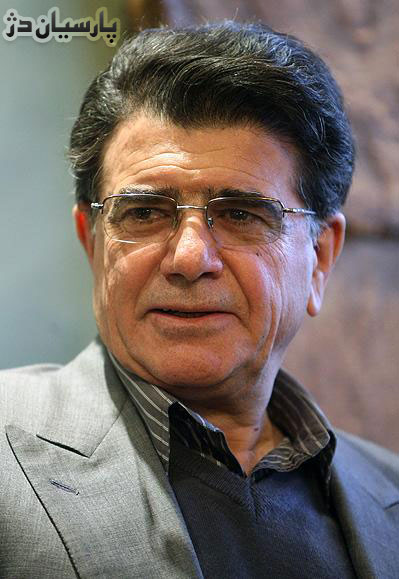
Mohammad Reza Shajarian
Mohammadreza Shajarian was born on Mehr 1, 1319 in Mashhad. He started reading since childhood with the same childish tone. Since childhood, due to his talent and good voice, under the teaching of his father, who was a reciter of the Qur'an himself, he was engaged in developing his voice, and in 1331, for the first time, the sound of his recitation of the Qur'an was broadcast on Radio Khorasan..
In 1338, he went to a preparatory seminary in Mashhad and from the same year he met a music teacher for the first time.
After receiving his diploma from the university, he was employed in education and teaching, and at this time he met Centaur.. In 1337, he went to Radio Khorasan and worked in the field of singing. Then, he was invited to Tehran to perform flower programs by Dawood Pirnia and participated in more than a hundred flower and leaf programs.. Shajarian got married in 1340, which resulted in three daughters and one son (Humayun) He went to Tehran in 1346 and met Ahmad Ebadi and participated in Ismail Mehrtash's class from 1346.. He also went to Ebrahim Bouzari to learn calligraphy in the calligraphers' association. From 1347, he continued calligraphy with master Hasan Mirkhani. In 1349, he obtained an honors degree in calligraphy.
Shajarian worked with the radio under the pseudonym Siavash Bidkani until 1350, but after that he used his name.. In 1351, he met Noor Ali Khan Broumand in the Golha program and began to learn Taherzadeh's vocal style from him.. From 1352, he learned all the musical lines and ways of singing ballads from Abdullah Davami. In the same year, together with a group of artists such as Mohammad Reza Lotfi, Nasser Farhangfar, Hossein Alizadeh, Jalal Zulfanun and Dawood Ganjei, he founded the center for preservation and dissemination of music under the supervision of professor Dariush Safwat..
He carefully followed the vocal styles of Iqbal al-Sultan, Taj Esfahani, Mirza Zoli, Adib Khansari, Hossein Qavami and Banan on the plates and tapes.. From 1354, he started teaching students in the field of singing in the Faculty of Fine Arts of Tehran University and ended his teaching career in 1358 with the closure of this field.. In 1357, along with Hoshang Ebtahaj and some other artists, he left the radio. In March 1356, Shajarian founded Del Awaz Company.. Also, in 1356, he won the first place in the national Quran recitation competition
In 1357, he performed several national anthems and did not continue his cooperation with government organizations and researched and compiled vocal lines at home and devoted himself to the education of his old students.. In the 1960s, Shajarian began an extensive collaboration with Parviz Meshkatian, which resulted in albums such as Bidad Homayun, Astan Janan, Sarre Eshgh. (Mahor), Nova, Dostan, Gobd Mina and John were lovers. During these years, he performed concerts outside Iran with Aref group.
After 1368, he performed concerts in America and Europe with Dariush Pirniakan and Jamshid Andalibi.. In the following year, this group performed concerts to collect aid from the people of the world for the victims of the Rudbar earthquake. The albums Del Majnoon, Saro Chaman, Yad Ayam and Asman Eshgh were released in these years in collaboration with the Ava group, as well as Delshadgan composed by Hossein Alizadeh.. In 1374, Shajarian held concerts in the cities of Isfahan, Shiraz, Sari, Kerman and Sanandaj, and in the same year, he released the album Cheshme Noush with Mohammad Reza Lotfi and some time later, Dar Khyal with the collaboration of Majid Derakhshani.. In 1377, he released the album Shab, Sekot, Kavir composed by Kayhan Kalhor.
In 1378, Shajarian received the Picasso Prize from UNESCO. Since 1379, he has performed concerts with Hossein Alizadeh, Kayhan Kalhor and his son Homayoun, the result of which are the albums of Winter, Without You, Farid, Silent Instrument, and Mehr's Anthem.. In 2013, together with the same group, he performed a concert in Tehran called Ham Nava Ba Bam to help the victims of the Bam earthquake..
Since 2006, Shajarian cooperated with Ava group and performed concerts in Tehran, Isfahan, Europe, America and Canada.. In the same year and at the death ceremony of his mother, after 30 years, he recited Rabna's prayer again. Shajarian is now promoting and spreading authentic and traditional Iranian music with his son Homayoun Shajarian.. After Shajarian's concert in Vancouver, Canada, Globe and Mail introduced Shajarian as a legend of Eastern music..
personal life
In 1340, at the age of 21 and when he was a teacher, Mohammad Reza Shajarian met Mrs. Farkhandeh Gol Afshan, who was also a primary school teacher, and they got married in the city of Qochan.. A year later, on August 29, 1341, they celebrated their wedding in Mashhad and started living together, which resulted in three daughters.: Rachel, legend (Ex-wife of Parviz Meshkatian) and eyelashes (The wife of Mohammad Ali Rafiei, whose name appears in most Shajarian casts. He has a master's degree in graphics and works with his wife, who is an engineer, on the computer design of his father's cassettes.), and a boy (Humayun). Shajarian divorced this lady in 1371 and married Katayoun Khansari a year later.. The result of this marriage is Rayan, the second son of Mohammad Reza Shajarian, who was born in Vancouver.
Concerts
Shajarian has held many concerts, and the Rast Panjgah concert with Mohammad Reza Lotfi and Nasser Farhangfar is one of the most important of them.. Among his other works, he collaborated with Aref and Shida, as well as Chavosh, which include memorable works of Iranian music.. The Ham Nava concert with Bam is also one of the memorable concerts of Professor Shajarian, in which he performed a new style of Margh Sahar singing with his son.. After that, by performing many concerts with other masters, he did many things to introduce Iranian music to the world, which is still going on.. He has recorded many works together with Parviz Meshkatian, Mohammad Reza Lotfi, Hossein Alizadeh, Mohammad Mousavi, Dariush Pirniakan, Hassan Kasaei and other masters.. In the spring of 2006, he performed concerts in several European countries together with Majid Derakhshani, Saeed Faraj Puri, Mohammad Firouzi and his son Homayoun Shajarian.. This concert was also performed in Tehran and Isfahan in the summer and fall of 2006. Also, in 2010, he held his concert tour with the Shahnaz group in several countries such as Australia, England, Turkey, America.. In 2011, he performed concerts in a number of European countries with Shahnaz group.
- 2009 - Big concert tour to America, Australia, Turkey, England and...
- Mehr 1387 – Concert in Tehran in the Great Hall of the country
- June and July 2017 – Tehran concert To help build the tomb of Shams Tabrizi in Khoy
- America and Canada concert, June 2017
- ۱۳۸۶ – Concert in Isfahan
- ۱۳۸۶ – Concert in Tehran
- ۱۳۸۵ – French concert
- ۱۳۸۴ – London concert (Queen Elizabeth Hall)
- December 2004 – Tehran, (Great hall of the country)
- The 1382 – Same as Bam, Tehran (Hall of the Ministry of Interior) To help the victims of the Bam earthquake
- ۱۳۸۱ – Composition reading, Europe and Canada
- ۱۳۸۱ – Right of the pentagon, Europe and Canada
- ۱۳۷۹ – Nova, Europe, America and Canada
- ۱۳۷۹ – Rampage, Europe, America and Canada
- It is winter 1379 – Europe, America and Canada
- Summer 1378 – Concert of National Music Orchestra of Iran, Chehl Seton, Isfahan,
- 1367 Shur concert (Vahdat hall)
Esmail Mehrtash, Abdullah Davami, Noorali Broumand were among the teachers with whom Mohammad Reza Shajarian practiced rows, corners, and vocal periods of Iranian music..
He also learned to play the centaur from Jalal Akhbari and Faramarz Payor.
Cooperation with radio and television
For the first time at the age of 12, he recited the Quran on the local radio and in 1337, he was 18 years old when he started working with Radio Khorasan.. He came to Tehran in 1346 and worked with "Radio Iran" in the late 40s and until 1956. Due to the opposition of the family, with the nickname "Siavash Bidgani" in the "Green Leaf" and "Fresh Flowers" program, he performed many performances by the radio concert together with Mohammad Reza Lotfi, Jalil Shahnaz, Hassan Nahid, Nasser Farhangfar and other musicians of that period.. In the last years of the reign of Mohammad Reza Shah Pahlavi, the Shah of Iran, he cut off his cooperation with radio and television because of "broadcasting vulgar songs".. After the Iranian revolution of 1998 and the subsequent cultural revolution of 1999 and the interruption of music programs, his cooperation with the radio was also terminated..
In recent years and after the reforms, Farhang Radio broadcasts some of his old and new works in the Nistan program, as well as the Four Islamic Republic of Iran channel in a program called "Iranian Voices" using "Treasure of Fresh Flowers of Radio Iran". It broadcasts Shajarian's song along with images of calligraphy, painting and other Iranian arts.
10th presidential election and termination of cooperation with radio and television
After the 10th round of Iran's presidential elections, Mohammad Reza Shajarian wrote a letter to Ezatullah Zarghami asking him to refrain from broadcasting his works on radio and television.. he said: "The hymns he sang, especially the hymn of Iran, O Sarai Omid, belong to the years 1357 and 1358 and have nothing to do with the current situation.". He announced that the Broadcasting Organization had no role in the preparation of these works and requested this organization not to broadcast his voice and works in any of the radio and television units.. Broadcasting on the eve of the elections and after that, Shajarian's works were widely used (Especially the anthem of Iran, O House of Hope) and other songs with a national theme. He said in an interview with BBC: "In a situation where people are in awe and, according to Mr. Ahmadinejad, panic has been set in motion, my voice has no place in the radio and television.. "My voice is the sound of khish and khashak and it will always be for khish and khashak." In a conversation with the BBC, he said that every time he hears his voice from this media, he feels ashamed and his body trembles..
awards
In 1378, he received the Picasso prize and an honorary diploma from the UNESCO organization in Paris. This award is given every five years to an artist who strives to introduce the culture and art of his country. Before him, this award was received by Nusrat Fateh Ali Khan, a Qawwali singer from Pakistan. In 2006, the professor received the Mozart Award from UNESCO. Ostad Shajarian was nominated for a Grammy Award for 2 years because of his albums "Frayado Bi To".. The Grammy Award is the most prestigious music award in America. He is the only Iranian singer who has been nominated for a Grammy Award. Every year, 5 cassettes from the classical music section are nominated for this award.
glorify
Mohammadreza Shajarian as a professor of Iranian music has been honored in many ceremonies, including on Friday, November 28, 2009, a ceremony called "The Third Year of Commemorating Persian Literature and Art" was held at Stanford University in America, during which the commemoration award was given by its founder, Beta. Daryabari, who is the ex-wife of Omid Kurdestani, one of the senior managers of Google, was awarded to Mohammadreza Shajarian, a professor of Iranian music.. In this ceremony, the "Bita" award was given to Mohammad Reza Shajarian, who has held many concerts in Iran and European countries, America and Canada for many years, because of his great efforts to preserve and promote Iranian music..
In this ceremony, after receiving the award, Mohammad Reza Shajarian stood behind the podium and while thanking Stanford University and Bita Daryabari, he answered the questions of the audience in the hall, who were mostly Iranians.. It is necessary to mention that this award was established by the Iranian studies department of Stanford University in America, and in the first year of this ceremony, Simin Behbahani, a contemporary Iranian lyricist and writer, received this award..
Work content
Most of the performed songs and ballads were selected from the poems of great Iranian poets such as Saadi, Hafez, Molavi, Babataher, Khayyam, Attar and some old ballads with romantic and social themes.. Also, in some of his concerts and more recent works, he has used the "new poetry" of poets such as Fereydon Moshiri, Nima Yoshij, Sohrab Sepehri, Shafi'i Kodkani, Mehdi Akhwan Al-Talihi and Hoshang Abtahaj.. Among his joint works is a selection of Khayyam's quatrains with the voice of Shajarian and Ahmad Shamlou's quatrains.. Also, he recited a number of Quranic prayers in the famous work of Rabbana, which was broadcasted on Iranian radio and television during Ramadan iftars. Also, after the death of his father, who was one of the famous teachers and reciters of the Quran in Mashhad, two cassettes of the recitations were released. He published his Qur'an under the title "In memory of the father"..
calligraphy
Besides his talent in singing, Mohammadreza Shajarian is very interested in Iranian calligraphy. From 1344, he studied Nastaliq under the teachers Ebrahim Bouzari and Hossein Mirkhani. He currently has a distinguished degree in Nastaliq line.
Innovative instruments
Shajarian is the creator of several new instruments in Iranian music. In May 1390, he officially displayed these instruments in an exhibition in Tehran. His innovative instruments include::
- Chaotic city
- Clarity
- Sagar
- charisma
- Sabo
- thunder
- Bad
- organ
exhibitions
Exhibition of Shajarian's innovative instruments 1390 An exhibition of Mohammad Reza Shajarian's innovative instruments (Iranian traditional singer) It was opened on May 18, 1390 in Baharkhaneh Hall of Artists
Effects
- ۱۳۹۰ – happy chicken
- September 2008 - The language of fire (Same tone with whistling) A single song in Awaz Dashti with a poem by Fereydoun Moshiri, which according to him, in an interview with American Radio, was sung in response to the events after the 2008 presidential election..
- September 2008 – Drunk driving in Homayun's machine
- April 1388 – oh rain
- ۱۳۸۶ – The commotion of lovers (In the Afshari music device)
- Implementation 2004 / Published in 2006 – Mehr song in Bayat Turk and Afshari song
- Implementation 2004 / Published in 2006 – A silent instrument in the desert song
- May 2004 – empty cup (which was officially released this year, but its recording dates back to the fifties)
- ۱۳۸۳ – scream
- ۱۳۸۱ – It can't happen without you
- ۱۳۷۹ – it is winter
- ۱۳۷۸ – The smell of rain
- ۱۳۷۸ – calm down
- ۱۳۷۸ – Wafa song
- ۱۳۷۸ – Recitation of Quran 1 and 2
- ۱۳۷۷ – Night, silence, desert
- Implementation 1356 / Published in 1377 – face to face
- Implementation 1354 / Published in 1377 – the right of the fifth
- ۱۳۷۶ – You are a mystery
- ۱۳۷۶ – connected night
- ۱۳۷۶ – scandal of the heart
- ۱۳۷۵ – in imagination
- ۱۳۷۵ – Message from the heart
- Implementation 1363 / Published in 1374 – Humayun Masnavi
- ۱۳۷۴ – Mina dome
- ۱۳۷۴ – Jean lovers
- Performance in the summer of 1371 / Published in 1374 – remember the days
- Implementation 1373 – Dandelion (Publication was not allowed)
- ۱۳۷۲ – drinking fountain
- ۱۳۷۱ – loved ones
- ۱۳۷۱ – sky of love
- ۱۳۷۰ – cedar
- ۱۳۷۰ – secluded
- ۱۳۷۰ – crazy heart
- ۱۳۷۰ – Nasim's message
- Implementation 1359 / Published in 1367 – Storyteller
- 1367 - Hands
- ۱۳۶۷ – incense smoke
- ۱۳۶۵ – Nova, compound reading
- ۱۳۶۵ – head of love
- ۱۳۶۵ – Mahor
- ۱۳۶۴ – Astan Janan
- ۱۳۶۴ – Rampant
- ۱۳۶۳ – seal link
- ۱۳۵۹ – Love knows in the song of Abu Ata
- ۱۳۵۸ – The secret message (The secret of the heart and the expectation of the heart)
- ۱۳۵۸ – Dawn in the satellite device
- ۱۳۵۸ – Our Lord.
- ۱۳۵۷ – Golbang 2 (State of love)
- ۱۳۵۷ – Gulbang 1
- ۱۳۵۶ – In memory of Arif in the song Bayat Turk
- ۱۳۵۶ – Face to face on Nova device
- ۱۳۵۵ – John John in the triple machine
- Colorful flowers program 472, 541 A, 541 B, 544 B, 562 B, 567, 572 B, 574, 575, 578, 580 A, 580 B
- Fresh flowers program 13, 23, 25, 31, 37, 42, 48, 53, 54, 58, 60, 65, 66, 71, 72, 75, 77, 85, 87, 92, 97, 100, 102, 104 . 176, 178, 180, 184, 182 A, 182 B, 185, 187, 188, 190
- Weekly anthology program 2, 3, 6, 7, 10, 14, 17, 18, 21, 22, 23, 24, 26, 29, 30, 32, 34, 37, 38, 40, 41, 42, 43, 44 47, 48, 49, 50, 52, 53, 54, 55, 57, 58, 60, 61, 66, 67, 68, 70, 71, 72, 73, 76, 77, 78, 79, 80, 81 , 82, 83, 84, 85, 86, 88, 89, 93, 94, 96, 98, 100, 104, 105, 107, 109, 111, 114
- Green Leaf Program 216, 242, 245, 246, 247, 248, 249, 250, 251, 255, 258, 261, 271, 279, 283, 287, 288, 292, 306, 308 A
- One flower program 402, 407, 410, 412, 413, 417, 418, 425, 439, 446, 447, 450, 457
- Iranian music program 1, 2, 9, 10, 31, 32, 33, 53, 54, 55, 96, 104, 105, 106, 107, 108, 109, 110, 111, 112, 113, 114, 115, 116 , 117
- Quatrains of Khayyam
- Qur'an in Farsi format, which came to the market after the death of their father under the name of Yamee Dad 1 and 2
- Paris School of Music in 1365, who performed three albums Saru Chaman, Del Majnoon and Payam Nasim, who performed these five albums consecutively in 3 days.
- Hossamuddin Siraj
- Qasim Rafati
- Homayun Shajarian
- Iraj Bastami
- Mohsen Karamati
- Ali Jahandar
- Hamidreza Nurbakhsh
- Alireza Ghorbani
- Sina Sarlak
- Muzaffar Shafi'i
Shahram Nazeri, Alireza Eftekhari and Ali Rostamian have also worked with him for some time on vocal lines..
Stay with us to see pictures of Mohammad Reza Shajarian.
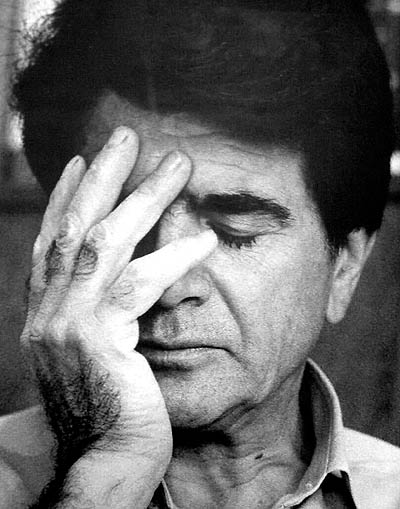
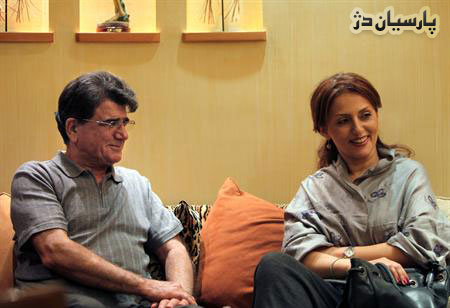

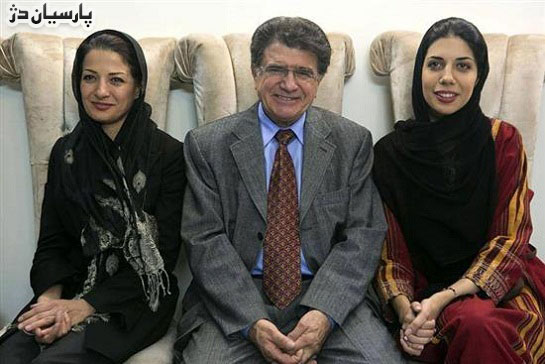
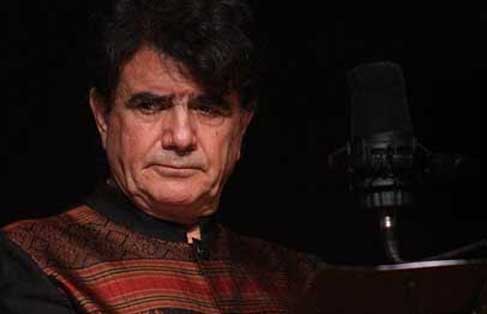
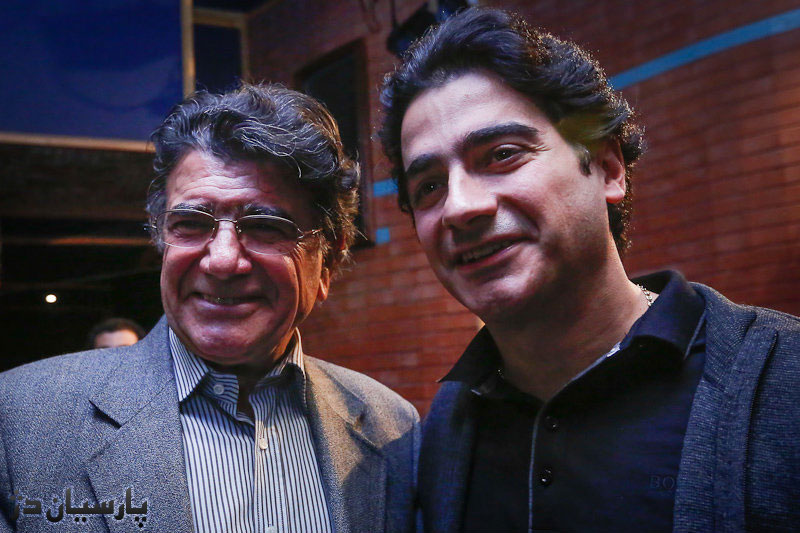
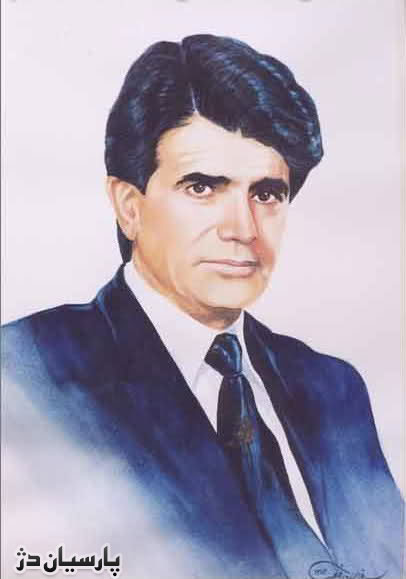

Taken from AKA Iran


